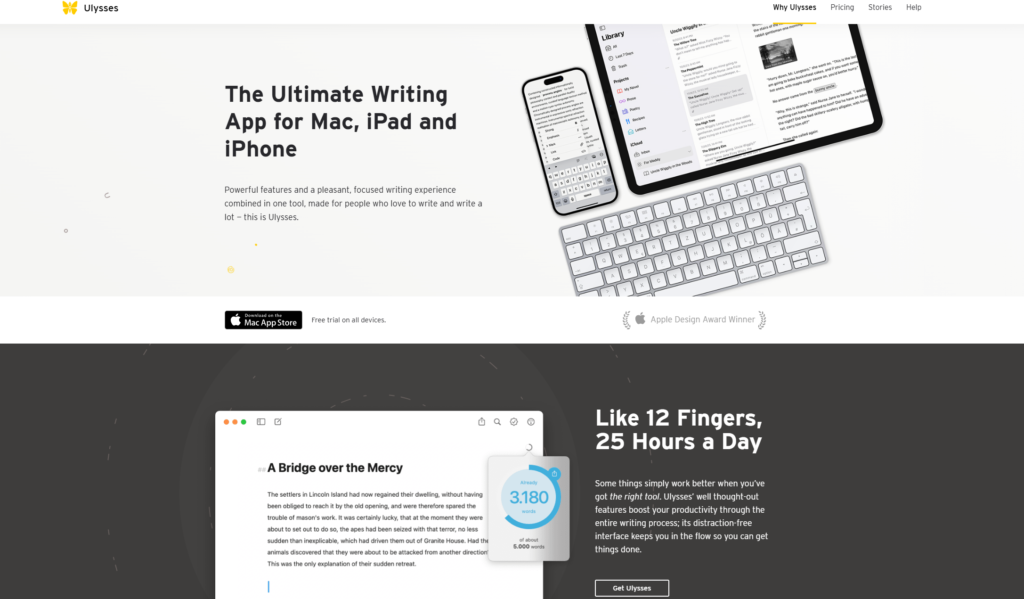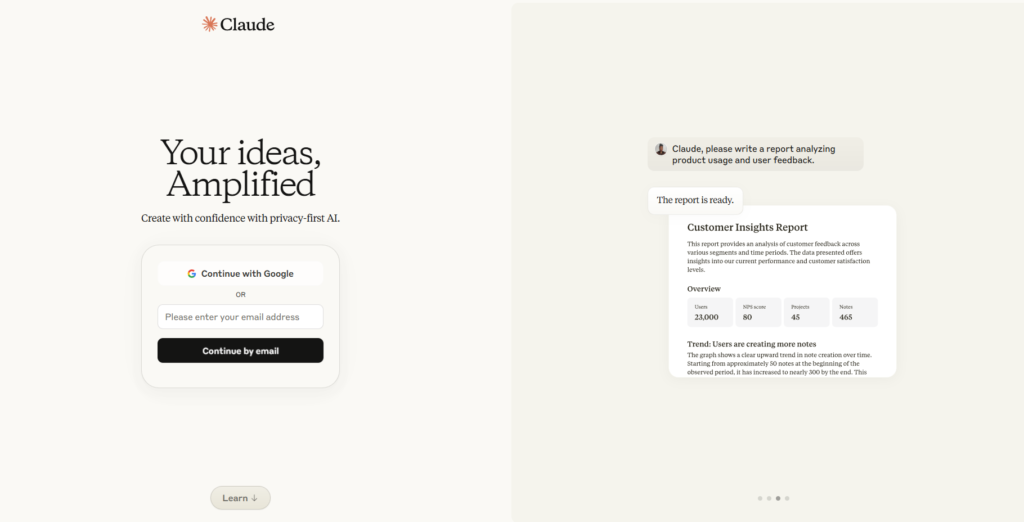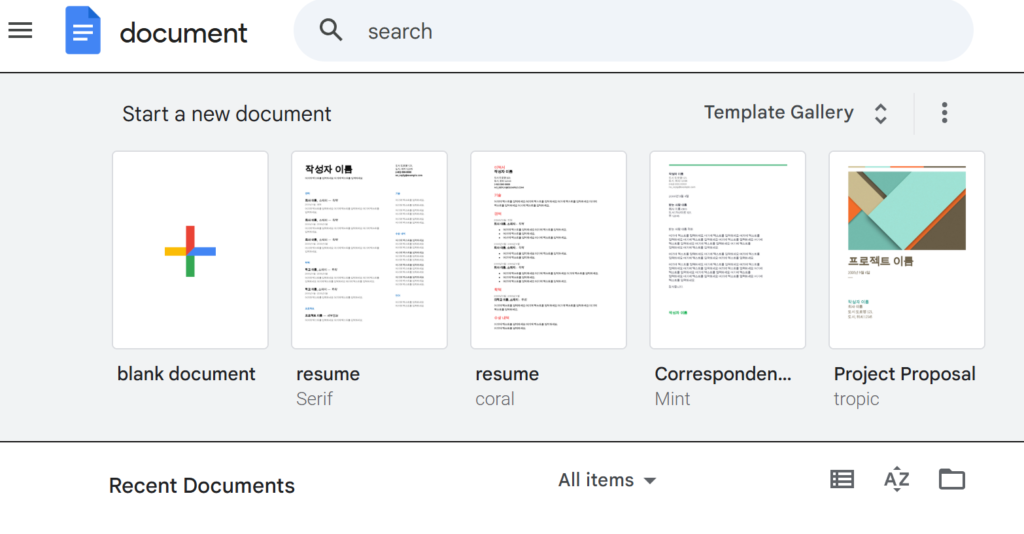Writing in the Digital Age
In today’s digital era, writers have more tools than ever to boost their productivity and creativity.
Whether you’re drafting a blog post, novel, or business report, the right writing app can make a significant difference in your workflow. As of 2025, countless options claim to be the best writing apps, including emerging AI writing tools, which assist with generating and editing text. But how do you choose the right tool for your needs?
A grest writing software should provide a distraction-free environment, offer easy formatting (bonus points for Markdown support), help organize your content, and make sharing or exporting simple. Keeping these criteria in mind, this article presents a writing software comparison(2025) of the top 4 writing apps that stand out for writers. Each of these apps caters to different needs – from content organization to pure focused writing – so you can find the one that fits your style.
Notion – All-in-One Workspace for Organization https://www.notion.com/

It’s no surprise that Notion continues to be a favorite app for many. Notion is not a traditional minimalist text editor; instead, it shines in organization and content management. This all-in-one workspace allows you to create pages, databases, and boards to structure your notes and drafts. For writers juggling multiple projects or ideas, Notion makes it easy to keep everything sorted and interlinked. You can maintain a content calendar, research database, and your actual manuscript all in one place. It even offers analytics (like word counts or progress trackers) and planning features that help in scheduling and tracking your writing tasks.
- Pros : Powerful organizational tools (nested pages, tables, kanban boards), supports various content types (text, images, embeds), real-time collaboration and cross-platform availability (web, desktop, mobile). As of 2025, Notion also includes built-in AI features that can help brainstorm ideas or summarize text, adding to its versatility.
- Cons : The abundance of features means a learning curve for new users, and the interface can feel overwhelming at first. Notion isn’t the most distraction-free environment – the presence of menus and sidebars can detract from pure writing focus. It also requires internet access for full functionality (offline mode is limited).
Ulysses – Focused Writing for Apple Users https://ulysses.app/

For Mac and iOS users, Ulysses is often hailed as one of the writing environments available. It is a beautifully designed app that provides a clean, distraction-free interface tailored for long-form writing. Ulysses uses a Markdown-based text editor, meaning you can format text via simple syntax without ever taking your hands off the keyboard. This keeps you in the flow of writing. The app also features a library with a tree-like structure to organize your notes, chapters, or articles, making it easy to navigate large projects (similar to Scrivener’s binder system).
- Pros : seamless focus mode options (full-screen, typewriter scrolling) that minimize distractions, robust organization with folders and sheets for managing multiple documents, and extensive export/publishing features. Ulysses can export to PDF, Word, ePub and even publish directly to WordPress or Medium, which is a huge plus for bloggers. It also syncs reliably through iCloud, so you can write on your Mac and pick up on your iPad or iPhone instantly.
- Cons : Exclusive to the Apple ecosystem (no Windows or Android versions), and it comes with a subscription cost. If you’re on non-Apple devices, Ulysses is off the table. Additionally, while Ulysses has more features than ultra-minimal editors, some yours who prefer absolute simplicity might find it more than they need.
iA Writer – Ultra-Minimalist Focus Tool https://claude.ai/

If you crave simplicity, iA Writer might be the perfect fit. This app embodies the “less is more” philosophy and is famous for its no-frills, distraction-free writing experience. Available on Windows, Mac, iOS, and Android, iA Writer offers a consistent experience across devices. Its interface is an minimal as it gets: a blank canvas with plain text, where even formatting is handled through Markdown syntax or simple keyboard shortcuts. A signature feature is its Focus Mode, which dims everything except the current sentence or paragraph, keeping you laser-focused on your words.
- Pros : Possibly the most distraction-free interface among writing apps – it strips away all toolbars and palettes, allowing you to concentrate solely on text, It supports Markdown for quick formatting and can export to formats like PDF or Word. iA Writer also now includes the ability to publish directly to platforms like Medium or WordPress. It’s lightweight, launches quickly, and has a one-time affordable purchase (no subscription for desktop versions), making it accessible.
- Cons : The flip side of minimalism is the lack of advanced features. iA Writer has very limited organizational tools (no integrated library to manage a large collection of files or research notes). It’s best suited for single documents or short pieces; managing a full book or extensive notes might require outside organization. Collaboration features are essentially non-existent (you’d have to share files manually), and while it’s great for drafting, you may need to switch to another tool for final formatting or complex editing.
Google Docs – Collaboration and Convenience https://docs.google.com/

Google Docs might not offer a fancy focused interface, but it remains a powerhouse due to its collaboration and ease of use. As a cloud-based writing software, Google Docs allows multiple people to edit a document simultaneously and leave comments or suggestions, which makes teamwork effortless. It’s accessible for free through any web browser (and has mobile apps), with documents saved automatically to the cloud. For many use cases, especially in professional or educational settings, Google Docs is the go-to tool.
- Pro : Real-time collaboration is the standout feature – you can see others typing in real time and you built-in commenting and suggestion modes for editing feedback. It’s free with a Google account, and being cloud-based means your work is accessible from anywhere and backed up without you thinking about it. It also offers a decent set of formatting tools, and a variety of templates for things like resumes or reports. Version history is another strong feature. letting you revert to earlier drafts if needed.
- Cons : Google Docs it not a specialized “writer’s tool” for focus; it’s essentially and online word processor. Offline use is limited (you need to set it up and even then a lot of the collaboration features won’t work offline). It has fewer advanced layout or typesetting options than desktop apps like MS Word or Scrivener. Also, working in a browser can introduce distractions of its own (tabs, notifications) unless you use it in a dedicated windows. Lastly, for those concerned about privacy, having drafts on Google’s servers might be a consideration.
Other Noteworthy Writing and Note-Taking Apps
The four apps above are our top picks, but depending on your specific needs, you might consider a few additional apps that excel in certain areas:
- Apple Note : If you’re in the Apple ecosystem, Apple’s default Notes app is free, fast, and syncs seamlessly across your devices. It’s great for jotting down ideas, quick outlines, or even drafting shorter pieces. It has gained features like document scanning, basic formatting, and folders, although it’s still best for simple note-taking.
- Google keep : Google’s lightweight note app is excellent for capturing quick thoughts or to-do lists. It’s simple and reliable, with color-coded notes and reminder features. However, Keep is not ideal for long-form writing or complex organization beyond tags and labels.
- RemNote : A powerful tool for those who want a note-taking app that doubles as a learning system. RemNote combines note-taking with spaced repetition flashcards, making it great for studying and knowledge management. If your writing involves a lot of research or you want to remember what you write (like lecture notes, book research), RemNote is worth a look. But its interface and approach can be overkill for straightforward writing tasks.
- Evernote : Once the king of note-taking, Evernote is still a feature-rich, cross-platform notebook with tagging, web clipping, and document search. It’s limited now, and many users feel it has stagnated. It’s a solid choice if you already have tons of legacy notes in it or need its particular mix of features, but new users often gravitate to alternatives like OneNote or Notion.
- Scrivener : This is the go-to book writing software for many novelist and academics, known for its robust project management, Scrivener offers virtual index cards, an outliner, the ability to keep research, notes, and chapters all in one project, and powerful export options. It has a steep learning curve but is incredibly powerful for long-form writing and complex projects. If you need to structure a 100,000-word manuscript with research PDFs and character notes, Scrivener is hard to beat. It’s a desktop app (available on Mac, Windows, and iOS for a one-time purchase).
There are many other tools out there – from simplistic ones like Bear or Typora, to advanced knowledge bases like Obsidian, and even the classic Microsoft Word or OneNote. The best app is ultimately the one the fits your personal workflow and preferences.
